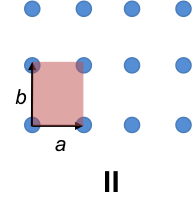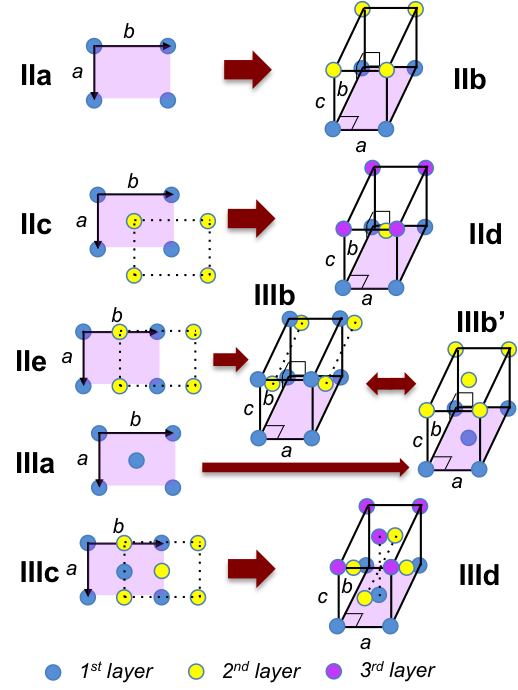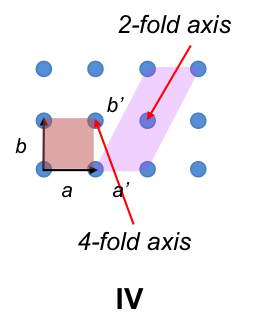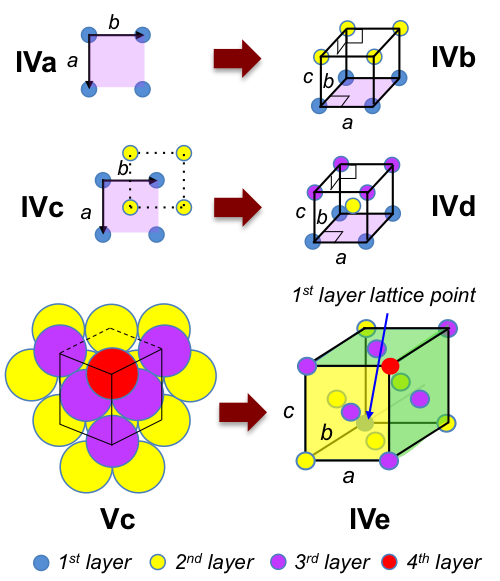As mentioned in previous sections, a unit cell is a parallelepiped that is the simplest repeating unit of a three-dimensional Bravais lattice, which is obtained by replicating one of the five two-dimensional lattices and stacking the replicated lattices above one another. The first two types of unit cells that form Bravais lattices are the triclinic and monoclinic unit cells.
There are three ways to stack the layers of the two-dimensional lattice depicted in figure I (where IaI ≠ IbI and the angle between the basis vectors is not 90o) such that the space lattice maintains a 2-fold rotational symmetry.

The first way is to stack successive layers directly above one another (Ia), resulting in a primitive monoclinic unit cell(Ib), with IaI ≠ IbI ≠ IcI and α = β = 90o, γ≠ 90o.

The second way is to stack a second layer such that its lattice points are in between the lattice points of the first layer (Ic). A third layer is then stacked directly above the first layer, giving a non-primitive unit cell known as a base-centred monoclinic unit cell (Id), with IaI ≠ IbI ≠ IcI and α = β = 90o, γ≠ 90o.
The third way is the stack the second layer with its lattice points above the middle of parallelograms formed by the lattice points of the first layer (Ie). A third layer is then stacked directly above the first layer. With a different choice of basis vectors (If), we again obtain a based-centred monoclinic unit cell (Id).
If the second layer is stacked in a way that 2-fold rotational symmetry is no longer preserved in the space lattice (Ig), we have a triclinic unit cell (Ih) with IaI ≠ IbI ≠ IcI and α ≠ β ≠ γ.
All monoclinic units cells are described by the parameters of IaI ≠ IbI ≠ IcI and α = β = 90o, γ≠ 90o. Furthermore, all monoclinic unit cells have just one 2-fold rotational axis of symmetry. Although it is possible to outline a primitive unit cell for the based-centred monoclinic lattice, the primitive unit cell has two angles that are not equal to 900 and is therefore less symmetrical and not monoclinic.
A triclinic unit cell, on the other hand, has no essential symmetry as it only has a 1-fold rotational axis of symmetry, which is trivial. We can therefore construct different three-dimensional Bravais lattices, each with 1-fold rotational symmetry, by replicating triclinic unit cells of different dimensions. This is the reason why a lattice with one-fold rotational symmetry is not included as one of the two-dimensional Bravais lattices (see earlier article).









